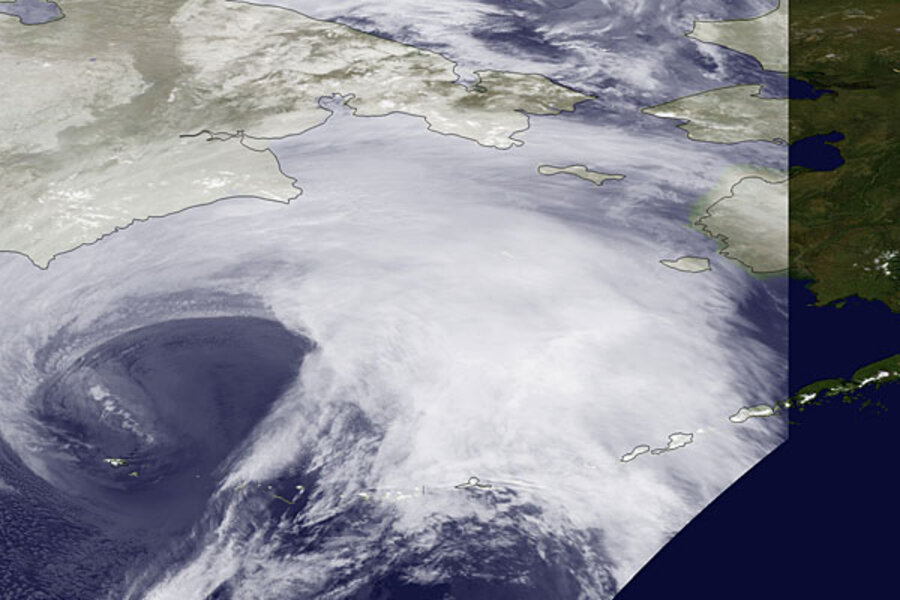Nome, Alaska braces for rare, monster storm
Loading...
| Anchorage, Alaska
An "epic" storm was bearing down on western Alaska on Tuesday, the National Weather Service said, warning that it could be one of the worst on record for the state.
The storm, moving inland from the Aleutian Islands, was expected to bring hurricane-force winds with gusts up to 100 miles per hour, heavy snowfall, widespread coastal flooding and severe erosion to most of Alaska's west coast, the National Weather Service said.
"This will be an extremely dangerous and life threatening storm of an epic magnitude rarely experienced," the service said in a special warning message.
Nome and the rest of the Seward Peninsula, a section of land that juts out toward Siberia, were expected to be the hardest-hit areas, said Andy Brown, lead forecaster for the National Weather Service in Anchorage.
Powerful storms in the North Pacific and Bering Sea are common this time of year, but this event is unusual because of its trajectory, Brown said.
"It's going very far north," he said.
Officials in Nome issued an evacuation order late on Tuesday for people living along Front Street, a beachside avenue that serves as the finish line for the Iditarod Trail Sled Dog Race, and for other low-lying areas in town.
At least three other communities were housing residents in local shelters as of Tuesday afternoon, said Bryan Fisher, chief of operations for the Alaska Division of Homeland Security and Emergency Management.
But long-distance evacuations from the remote region were not considered feasible, Fisher told a media briefing in Anchorage.
NATIVE VILLAGES IN HARM'S WAY
"Air traffic will not be flying in the weather that we're expecting in the next 24 to 48 hours," he said.
Posing an additional threat is the lack of sea ice off northwestern Alaska, forecasters said.
The last time a storm of a similar magnitude was sent in the same northward direction was 1974, but the sea surface was much more frozen then, Brown said.
"History tells that the sea ice helps subdue the storm surge," Brown said. "With no sea ice there, we could see the full brunt of that 6- to 9-foot storm surge."
Arctic sea ice this year reached the second-lowest coverage since satellite records began in 1979, according to the National Snow and Ice Data Center in Boulder, Colorado.
"Forty years ago, a big storm like this would come through and the sea ice would act as sort of a buffer," said Mark Serreze, director of the Snow and Ice Data Center.
"The Bering Sea has and always will have these strong storms. What is different now is their potential destructiveness as you lose the sea ice cover," he added.
Federal, state and local agencies were making emergency preparations in advance of the storm. The state Division of Homeland Security and Emergency Management set up an incident command, with numerous agencies coordinating responses.
The U.S. Coast Guard said it has staged helicopters in the region and sent a cutter to prepare for emergency responses, with a special focus on the crab-fishing fleet.
Numerous government agencies have set up an incident command, said Jeremy Zidek, a spokesman for the Alaska Division of Homeland Security and Emergency Management.
Nome, with 3,600 residents, is one of the largest cities in western Alaska. The communities spread along the coastline are mostly traditional Native settlements, with a few hundred to a few thousand inhabitants, and no roads linking communities.
Although the region is sparsely populated, the storm presents significant dangers, Alaska Senator Mark Begich said in a written statement.
"I realize we are in a remote part of the country, but many people and communities are in harm's way," Begich said.
(Editing by Dan Whitcomb and Cynthia Johnston)
(This story corrects the spelling of Bryan Fisher)





